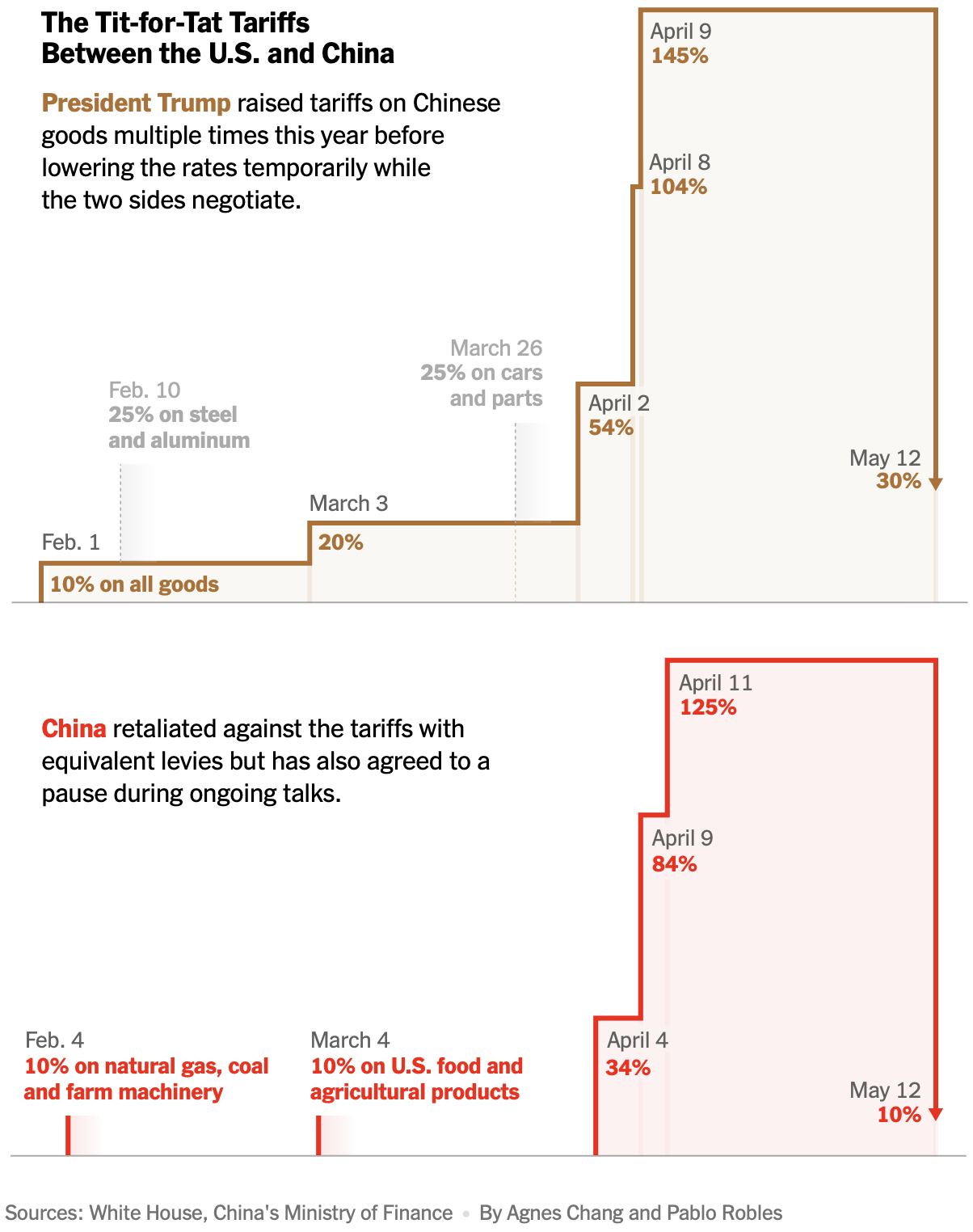
"The recent decision by the U.S. and China to pause tariffs for 90 days reflects a significant diplomatic effort, with tariffs on Chinese goods notably reduced from 145% to 30%."
"The mutability of tariffs, which have fluctuated dramatically between 30% and 145% on Chinese goods and 10% to 125% on U.S. goods, raises questions about the criteria for determining these rates."
"As the trade situation evolves, step charts may become increasingly relevant for illustrating the arbitrary nature and sudden changes associated with tariff adjustments."
"The potential for future updates to step charts underscores the ongoing volatility in international trade relations, emphasizing how quickly conditions can shift."
The recent suspension of tariff increases by the U.S. and China for 90 days represents a pivotal moment in trade relations. Notably, tariffs on Chinese goods have dropped from 145% to 30%, while those on U.S. goods have decreased from 125% to 10%. This move seems prompted by a need for stability amidst ongoing negotiations, yet the arbitrary nature of tariff rates raises questions about the criteria for their determination. As incidents may lead to further changes, step charts might become essential tools for visualizing these shifts in trade policy.
Read at FlowingData
Unable to calculate read time
Collection
[
|
...
]